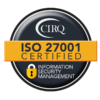What are the diseases that are getting the most attention in terms of research and development right now? The answers might surprise you.
Last month, Rare Patient Voice debuted its Pharma’s Most Wanted Patients listings. The first list represented the diseases of most interest as reflected by the number of requests Rare Patient Voice received for study respondents from current and potential clients over the past year. For an even closer look, we are now drilling down and looking at month over month rankings.
The list below examines the top 20 disease areas for October, with its September ranking in parentheses.
| Rank | Oct.2022 (Sept rank in parentheses) | Change |
| 1 | Heart Disease (4) | ↑ |
| 2 | Breast Cancer (5) | ↑ |
| 3 | Diabetes (2) | ↓ |
| 4 | Epilepsy (10) | ↑ |
| 5 | Lung Cancer (1) | ↓ |
| 6 | Hemophilia (3) | ↓ |
| 7 | Kidney Disease (6) | ↓ |
| 8 | Alzheimer’s Disease (9) | ↑ |
| 9 | Multiple Sclerosis (7) | ↓ |
| 10 | Eczema (Atopic Dermatitis) (16) | ↑ |
| 11 | Amyloidosis (23) | ↑ |
| 12 | Duchenne Muscular Dystrophy (41) | ↑ |
| 13 | Multiple Myeloma (11) | ↓ |
| 14 | Cancer (type not specified) (19) | ↑ |
| 15 | Crohn’s Disease (24) | ↑ |
| 16 | Myasthenia Gravis (20) | ↑ |
| 17 | Ulcerative Colitis (17) | NC |
| 18 | Bladder Cancer (51) | ↑ |
| 19 | Paroxysmal Nocturnal Hemoglobinuria (PNH) (75) | ↑ |
| 20 | Prostate Cancer (12) | ↓ |
Interestingly, three rare diseases moved up significantly in the rankings from September to October, with Paroxysmal Nocturnal Hemoglobinuria (PNH) moving up 56 spots, Duchenne Muscular Dystrophy up by 29, and Amyloidosis up by 12. An inference could be made that there are major research studies underway or planned in those disease areas.
“We look forward to sharing more data and brief analysis in upcoming versions of the Pharma’s Most Wanted Patients rankings, keeping an eye on which diseases have moved up and down in the list,” said Wes Michael, President and Founder of Rare Patient Voice. “Research is vital to progress in all diseases, and examining the diseases and conditions being studied can yield meaningful insights for researchers, patients, and family caregivers alike.”







